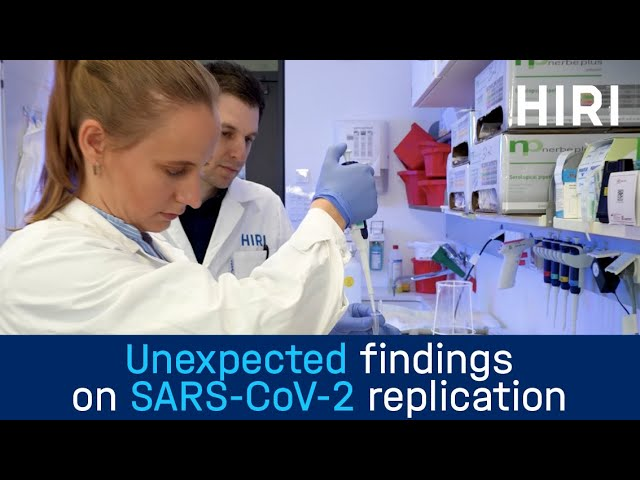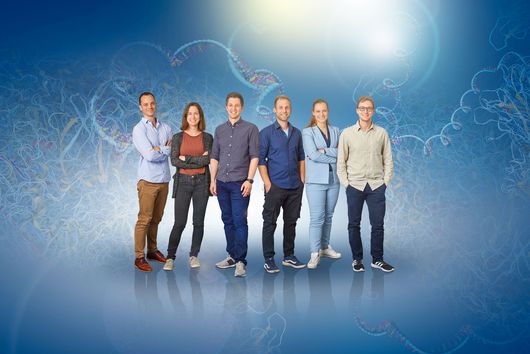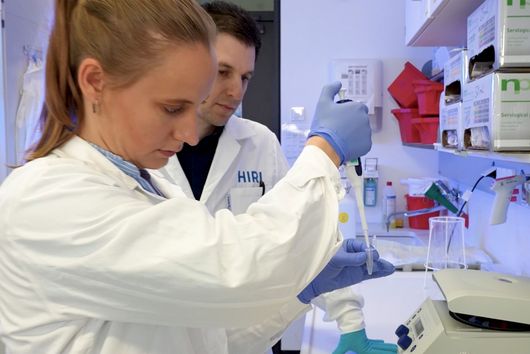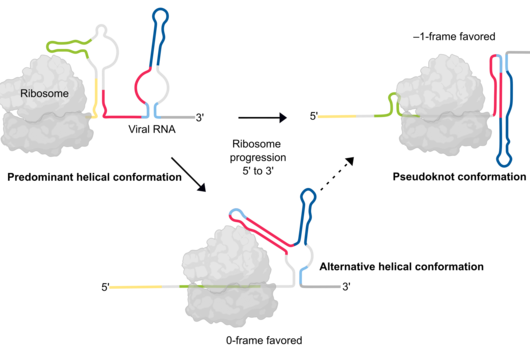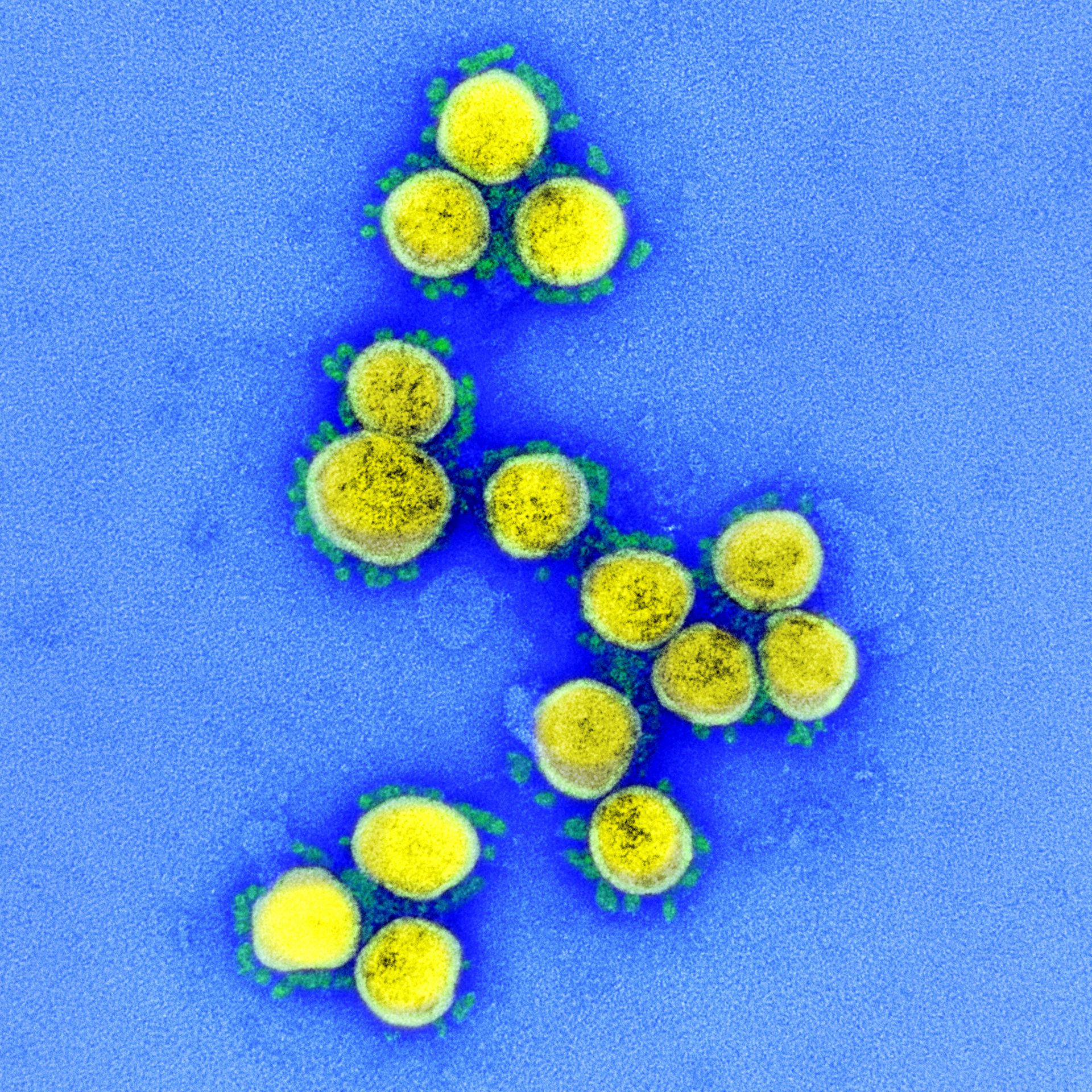
SARS-CoV-2 Research
Pandemics are one of the greatest threats to modern society and are mainly caused by zoonoses, i.e. the spread of pathogens from animals to humans, or indeed through (re-)emerging pathogens. Facilitated by global trade and mobility, pathogens can easily spread worldwide. Science, and in particular infectious disease research, plays an important role in the fight against pandemics: the search is on for crucial points at which infections can be prevented. Thus, the ultimate goal is to develop tailored drugs.
When the SARS-CoV-2 pandemic broke out in late 2019, the Helmholtz Institute Würzburg (HIRI) immediately began researching the process of infection, the onset of COVID-19 and the development of the disease. At the same time, our research, methods developed, and the lessons learned are preparing us for future pandemics, which might occur at any time.
In Focus: A human factor
How SARS-CoV-2 initiates its replication process during infection is not yet fully understood. Researchers from the Munschauer lab have shown in the journal Cell that it is the human protein SND1 which works together with the viral protein NSP9 to stimulate the virus’s genetic replication program in infected cells.
Recent Findings & News
COVID-19 research at HIRI: an overview
The coronavirus invades an organism - from that moment on the organism serves as a "host". The virus then uses the host organism to multiply and causes the symptoms of COVID-19 (including fever, cough, exhaustion). In order to understand these processes, research at HIRI, together with German and international cooperation partners, uses the latest technologies.
Firstly, the researchers looked at how the coronavirus multiplies in the host. To do this, SARS-CoV-2 uses a strategy called "ribosomal frameshifting". This method allows the virus, with its limited set of genetic information, to produce a much larger number of protein building blocks and thus establish itself and multiply in host cells. HIRI scientist Neva Caliskan and her research group went to great lengths to identify the key interaction partners during replication and achieved a breakthrough: They were able to unveil the interplay of RNA structures during translation of the SARS-CoV-2 genome. Furthermore, they demonstrated for the first time how ZAP, a protein of the human immune defense system, inhibits the replication mechanism of the SARS-CoV-2 coronavirus and can reduce the viral load by 20-fold.
HIRI group leader Emmanuel Saliba studies cells at an individual level. With the technology of "single-cell RNA sequencing", the cell infection process of an infected person can be traced in unprecedentedly high resolution. One step at a time, a series of maps is being created. With these maps, it is possible to observe how different RNAs are created, used and degraded in a single cell at a specific time. In collaboration with a nationwide research network, he was able to show that the majority of patients with severe COVID-19 develop unusually pronounced scarring of the lungs. Writing in Cell, the scientists reported that macrophages – immune cells which engulf and digest foreign substances – play a central role in this regard.
The research groups around Helmholtz junior researchers Mathias Munschauer and Redmond Smyth wanted to find out which factors lead to the reproduction of the virus in the host. In a holistic approach, they identified the interaction partners of the virus in the host. In this way, it can be determined which host factors are essential for the reproduction of the virus. This enabled Mathias Munschauer to create the first complete atlas of direct interactions between the coronavirus and the cells it infects. In 2023, the Munschauer lab has shown for the first time in the journal Cell that the human protein SND1 works together with the viral protein NSP9 to stimulate the virus’s genetic replication program in infected cells.
Research groups at the Helmholtz Institute Würzburg are not only researching the SARS-CoV-2 virus but also bacterial pathogens, other viruses and the host response by the immune system.
Scientific publications on SARS-CoV-2
Further information on SARS-CoV-2 and the research efforts undertaken by our parent center, the Helmholtz Centre for Infection Research can be found here.
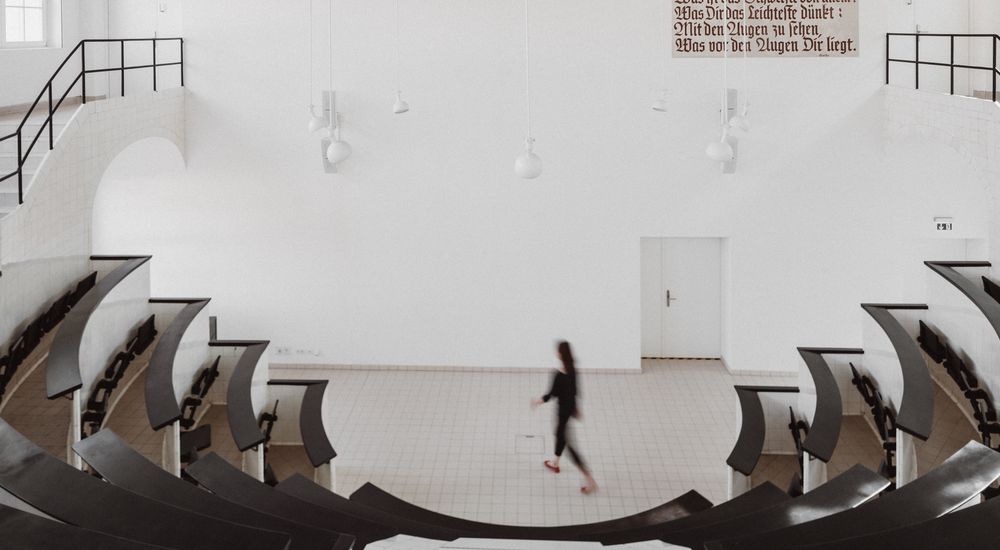
More information
Find out what else is happening at HIRI

